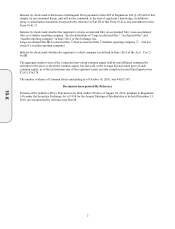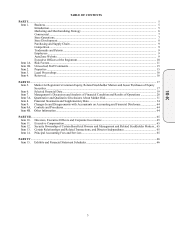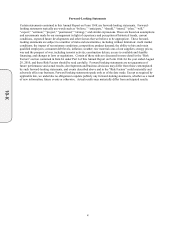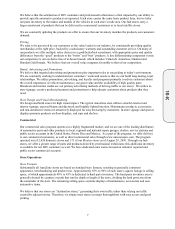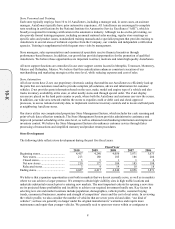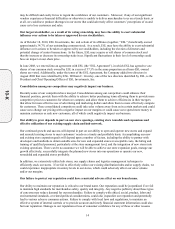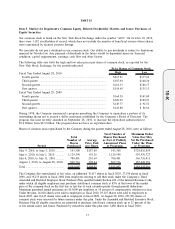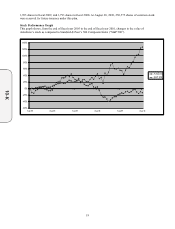AutoZone 2010 Annual Report Download - page 102
Download and view the complete annual report
Please find page 102 of the 2010 AutoZone annual report below. You can navigate through the pages in the report by either clicking on the pages listed below, or by using the keyword search tool below to find specific information within the annual report.
• the economy. In periods of rapidly declining economic conditions, both retail DIY and commercial
DIFM customers may defer vehicle maintenance or repair. Additionally, such conditions may affect our
customers’ credit availability. During periods of expansionary economic conditions, more of our DIY
customers may pay others to repair and maintain their cars instead of working on their own vehicles or
they may purchase new vehicles.
• rising energy prices. Increases in energy prices may cause our customers to defer purchases of certain of
our products as they use a higher percentage of their income to pay for gasoline and other energy costs.
For the long term, demand for our products may be affected by:
• the quality of the vehicles manufactured by the original vehicle manufacturers and the length of the
warranties or maintenance offered on new vehicles; and
• restrictions on access to diagnostic tools and repair information imposed by the original vehicle
manufacturers or by governmental regulation.
All of these factors could result in immediate and longer term declines in the demand for our products, which
could adversely affect our sales, cash flows and overall financial condition.
If we are unable to compete successfully against other businesses that sell the products that we sell, we
could lose customers and our sales and profits may decline.
The sale of automotive parts, accessories and maintenance items is highly competitive and is based on many
factors, including name recognition, product availability, customer service, store location and price. Competitors
are opening locations near our existing stores. AutoZone competes as a provider in both the DIY and DIFM auto
parts and accessories markets.
Competitors include national, regional and local auto parts chains, independently owned parts stores, on-line parts
stores, jobbers, repair shops, car washes and auto dealers, in addition to discount and mass merchandise stores,
department stores, hardware stores, supermarkets, drugstores, convenience stores and home stores that sell
aftermarket vehicle parts and supplies, chemicals, accessories, tools and maintenance parts. Although we believe
we compete effectively on the basis of customer service, including the knowledge and expertise of our
AutoZoners; merchandise quality, selection and availability; product warranty; store layout, location and
convenience; price; and the strength of our AutoZone brand name, trademarks and service marks; some
competitors may gain competitive advantages, such as greater financial and marketing resources allowing them to
sell automotive products at lower prices, larger stores with more merchandise, longer operating histories, more
frequent customer visits and more effective advertising. If we are unable to continue to develop successful
competitive strategies, or if our competitors develop more effective strategies, we could lose customers and our
sales and profits may decline.
We may not be able to sustain our recent rate of sales growth.
We have increased our store count in the past five fiscal years, growing from 3,673 stores at August 27, 2005, to
4,627 stores at August 28, 2010, an average store count increase per year of 5%. Additionally, we have increased
annual revenues in the past five fiscal years from $5.711 billion in fiscal 2005 to $7.363 billion in fiscal 2010, an
average increase per year of 6%. Annual revenue growth is driven by the opening of new stores and increases in
same-store sales. We open new stores only after evaluating customer buying trends and market demand/needs, all
of which could be adversely affected by continued job losses, wage cuts, small business failures and
microeconomic conditions unique to the automotive industry. Same store sales are impacted both by customer
demand levels and by the prices we are able to charge for our products, which can also be negatively impacted by
continued recessionary pressures. We cannot provide any assurance that we will continue to open stores at
historical rates or achieve increases in same-store sales.
If we cannot profitably increase our market share in the commercial auto parts business, our sales growth
may be limited.
Although we are one of the largest sellers of auto parts in the commercial market, to increase commercial sales we
must compete against national and regional auto parts chains, independently owned parts stores, wholesalers and
jobbers and auto dealers. Although we believe we compete effectively on the basis of customer service,
12
10-K


